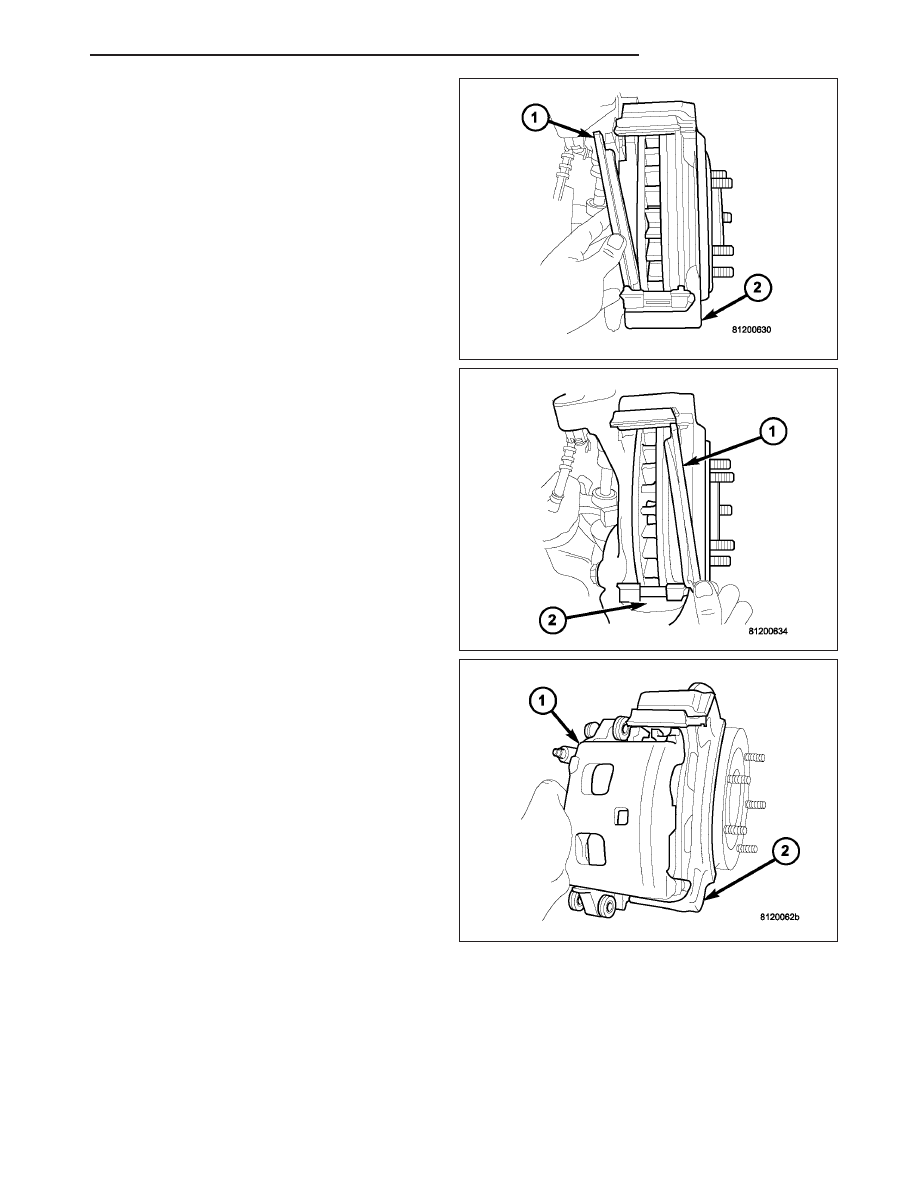Dodge Durango (HB). Manual - part 60

6. Install inboard brake shoe in adapter.
7. Install outboard brake shoe in adapter.
8. Tilt the top of the caliper over rotor and under
adapter. Then push the bottom of the caliper down
onto the adapter.
9. Install caliper, (Refer to 5 - BRAKES/HYDRAULIC/
MECHANICAL/DISC BRAKE CALIPERS - INSTAL-
LATION).
10. Install wheel and tire assemblies and lower vehi-
cle, (Refer to 22 - TIRES/WHEELS/WHEELS -
STANDARD PROCEDURE).
11. Apply brakes several times to seat caliper pistons
and brake shoes and obtain firm pedal.
12. Top off master cylinder fluid level.
DISC BRAKE CALIPERS
DESCRIPTION
The calipers are a single piston type in the rear and dual piston type in the front. The calipers are free to slide
laterally, this allows continuous compensation for lining wear.
HB
BRAKES - BASE
5 - 19